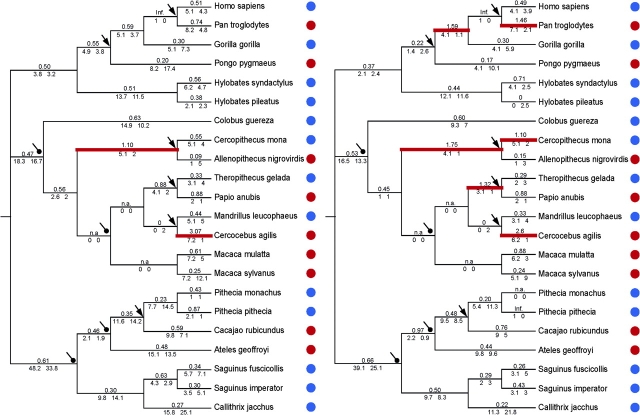FIG. 1.—
Lineage-specific dN/dS values of TLR5 in primates (A) for the entire gene and (B) for the extracellular domain. Estimated dN/dS values from the branch-based model are shown above branches and the estimated number of nonsynonymous and synonymous changes are shown below branches. Branches with dN/dS values greater than 1 are shown in red. Mating systems categorized as “less promiscuous” (polygyny + monogamy) are indicated with a blue circle, whereas “more promiscuous” (promiscuous + dispersed) mating systems are indicated with a red circle. Arrows show the six unambiguous independent transitions between less and more promiscuous mating systems. For the Old World and New World monkey clades, “circled-pointed arrows” indicate additional transitions between low and high promiscuity according to alternative but equally parsimonious reconstructions.

